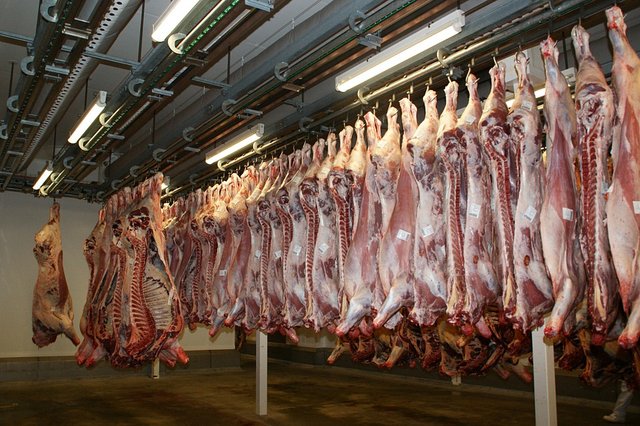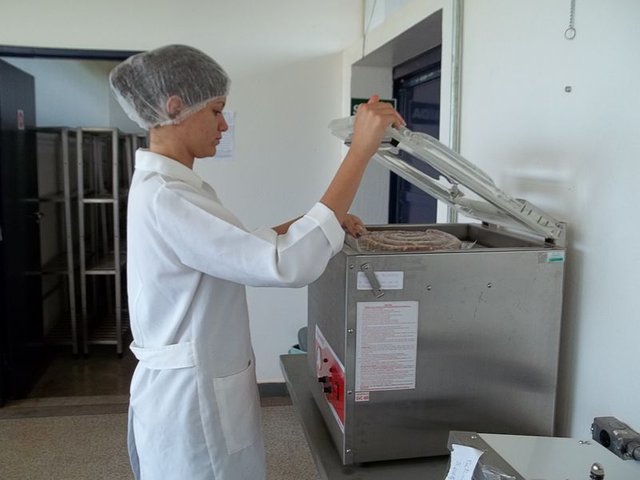
Meat consumption has historically been an indispensable practice in the human diet, mainly meat from cattle, pigs, buffaloes, goats, sheep, poultry and fish, since these types of meat guarantee the necessary proteins that our metabolism needs for its energy expenditure.
Now, the types of meat that we consume come from the slaughter of the animals already mentioned in the previous paragraph, an activity that is carried out by the meat industry, through slaughter procedures that have the endorsement of health organizations and the consent of international, national and regional governments in the search for protein for their inhabitants.

Fig. 2 The meats we consume come from the slaughter of animals and provide us with proteins for our metabolism. Image of public domain, Author: Photosforyou, 2017
However, with the accelerated advance of science, the modern food industry has been developing alternative methods for the production of meat, among these is the cultivation of meat in vitro, which consists of producing synthetic meat in sophisticated laboratories in order to avoid the slaughter of animals, but the truth is that this form of production seeks to obtain profit margins higher than the conventional income left by the current market.
In this regard, it is important to point out that there are currently countries where meat that has been grown in laboratories is already being sold. In this regard, Singapore was the first country in the world to approve the sale of chicken meat produced through cell culture to avoid the slaughter of animals.

Fig. 3 Synthetic meat is now being produced in sophisticated laboratories. Image of public domain, Author: Josee Vytor, 2010
Although there are still no regulations on the production or cultivation of in vitro meat, it is necessary to consider that, although the slaughter of animals will be avoided, the effects on our health of consuming synthetic meats should be evaluated.
BIBLIOGRAPHICAL REFERENCES CONSULTED:
[1] Bhat Z., Kumar S., and Fayaz H In vitro meat production: Challenges and benefits over conventional meat production. Journal of Integrative Agriculture. 2015: 14; 2. Article: Online access
[2] Mustafa M., Hadi J., Iiizam E., and Sani A Animal Killing and Postdomestic Meat Production. Journal of Agricultural and Environmental Ethics. 2017; 30: 1; 67 - 86. Article: Online access
OBSERVATION


Hi @lupafilotaxia
This kind of thing should be evaluated pros and cons for our health, despite seemingly a good idea.
Excellent reading, thank you for sharing.
Regards.
Downvoting a post can decrease pending rewards and make it less visible. Common reasons:
Submit
Knowing the advantages and disadvantages that synthetic meat has on people's health, is the main point of interest I estimate that as this type of consumption is adopted, details will begin to be known, since little has been socialized on this subject. Greetings professor @janettyanez, thank you for your visit.
Downvoting a post can decrease pending rewards and make it less visible. Common reasons:
Submit
Hi @lupafilotaxia, I had heard of sausages and some processed foods, but I was totally unaware of synthetic meat, as I have stated in several of my posts science never ceases to amaze us. Thank you for your contribution
Downvoting a post can decrease pending rewards and make it less visible. Common reasons:
Submit
Hello @madridbg, synthetic meat or cultured meat as it has been called, is one of the advances in biotechnology with the greatest impact for the food sector, the point is to know if it is viable for our health. Thank you for your appreciation.
Downvoting a post can decrease pending rewards and make it less visible. Common reasons:
Submit
@tipu curate 3
Downvoting a post can decrease pending rewards and make it less visible. Common reasons:
Submit
Upvoted 👌 (Mana: 0/3) Promote your post with @tipU :)
Downvoting a post can decrease pending rewards and make it less visible. Common reasons:
Submit